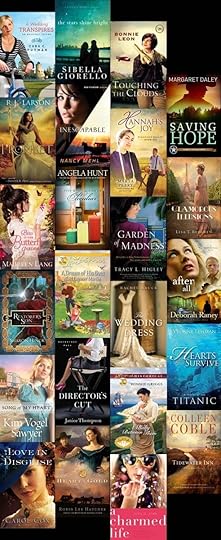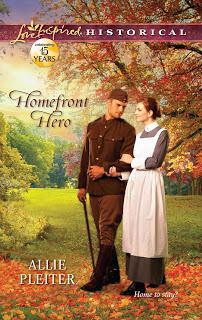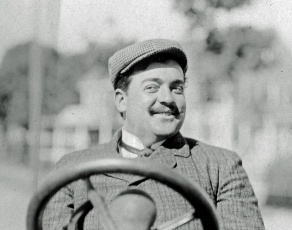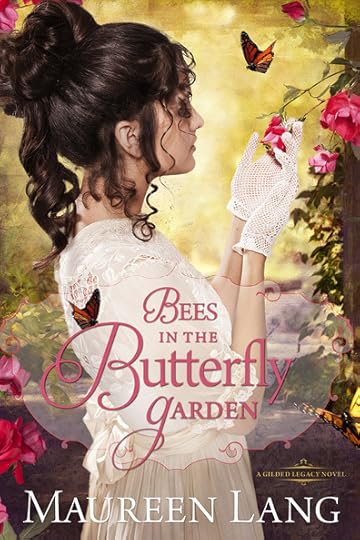Maureen Lang's Blog, page 13
June 11, 2012
Research Rejects
 As most historical writers can attest, part of the reason we choose to write historical novels is because we like to do research. I must admit there are few things in life as much fun as digging up a historical nugget that might prove itself the foundation for an entire plot.
As most historical writers can attest, part of the reason we choose to write historical novels is because we like to do research. I must admit there are few things in life as much fun as digging up a historical nugget that might prove itself the foundation for an entire plot.
I look to each era to help shape or inspire my characters by learning what they would have seen or done and what they might have thought about their own current issues. What would people around the dinner table be talking about? As I pursue understanding their world, I inevitably come across everyday items in which they might have been immersed.
But as you could guess from my enjoyment of research, I often gather too much information. I am, after all, writing a romantic tale and not a text book. Will someone really care about the hottest political battle of 1883 if I’m writing about thieves and friendship and how two people fall in love?
That’s where having a blog comes in handy! How can I pass up sharing such interesting historical tidbits that were necessarily rejected for my novel?
For example: although Meg, my heroine in Bees In The Butterfly Garden, was raised alongside some of the wealthiest young ladies in New England, it never really worked out to have any of my characters big shoppers. So how could I share that prior to my 1883 setting, a gentleman name Alexander T. Stewart opened New York’s very first department store? (1846)
The interesting thing was, he opened it on the corner of Broadway and Chambers, not far from Five Points. If you’ve seen many historical documentaries about New York, you’ll know Five Points was known for its poverty—and where thieves and pickpockets lived. Everyone laughed at Stewart for building a white marble palace, without even a name on the building. Those laughing predicted the store would be robbed the moment any merchandise was brought in.
But it wasn’t robbed, at least not in any overwhelming way. Instead, it was a great success. Stewart knew women did all the shopping in the family, so he hired 200 handsome male clerks. He also advertised lots of bargains (fire sale, anyone?). Women came from everywhere to do their shopping at Stewart’s store.
Stewart survived lots of ups and downs in his life, but perhaps the most interesting thing happened to him after he died. He left no heirs to his vast merchantman’s fortune. Two years after his death, his body was stolen from the graveyard of St. Mark’s-On-The-Bowery. The grave-robbers demanded a $200,000 ransom.
Well, Stewart was known to offer his customers a bargain, but personally he refused to haggle. Evidently his wife did not share his distaste for bartering. She refused to pay the $200,000 and eventually whittled down the demand to $18,000, which she paid for a collection of bones never really verified as to whether or not—for sure—they belonged to her husband.
Fascinating research, isn’t it? But nowhere would such interesting tidbits fit my story and so it received the unfortunate stamp of Rejection.
Ah, sometimes the writer’s life can bring a sigh or two.
June 7, 2012
Updates and Winners
 As I settle in to my new cyber-home, I wanted to give you a brief update on what I’ll be doing next. I will still update my blog every Monday, and whenever a friend releases a new book, I’ll happily feature that on my New Fiction Wednesday slot. As for upcoming topics . . .
As I settle in to my new cyber-home, I wanted to give you a brief update on what I’ll be doing next. I will still update my blog every Monday, and whenever a friend releases a new book, I’ll happily feature that on my New Fiction Wednesday slot. As for upcoming topics . . .
People ask all the time about where I get my ideas. For me, since I write historicals, most of my plots come from history itself. I love to read about historical events so research is a pleasure. Inevitably I come across some story or tidbit of little-renown and play the What-if Game. What if someone faced that situation—how would they react? What would the best possible reaction be? The worst? The most dramatic? What if their personal failures or insecurities were the exact shortcomings that would either help or hinder such a situation? And the game goes on.
I admit that I collect far more research than I can possibly use in any given story. Sometimes I’m able to put something aside and hope to use it in a future story, but mostly I just can’t fit everything in regardless of how much I’d like to. The story must be served first, since I’m not writing a text book.
So check back on Monday as I reveal some of my research techniques and stories that caught my attention for one reason or another—ones that couldn’t be squeezed in to any of my stories no matter how hard I tried.
I’ll start with Gilded Age stories, in New York because that’s where Bees In The Butterfly Garden takes place. Oh, what fun I had learning about that great city! I know I don’t have what it takes to have actually lived during that era—I’d no doubt have been a servant rather than having been blessed with a life of ease—but it’s fun to put myself there and imagine how it might have been. That is, of course, why I love reading historical novels.
So come back and visit with me and hear about some little known histories from the Gilded Age, New York, Denver and Chicago—all three cities I have reasons to investigate. 
And now about the winners. Last night on my previous post, I added a Comment revealing the names of the winners to my Bonus contest which I ran in conjunction with the Scavenger Hunt. (That was so much fun I’m sure I’ll be involved in another one when my next book releases early 2013!)
The winners of my Bonus contest are:
Marsha P.
Jackie Tessnair
Loraine Nunley
Ladies, please contact me privately at [email protected], so I can find out where to ship your choice of any one of my books, along with the butterfly necklace that commemorates the release of Bees In The Butterfly Garden.
For those who entered but did not win, rest assured I’ll be involved in more contests in the future, some much nearer than next year’s Scavenger Hunt. My publisher, Tyndale House, is helping me with a contest in July to celebrate Bees In The Butterfly Garden, so I’ll be sure to let you know details about that.
Happy Reading!
May 31, 2012
Scavenger Hunt Stop #14
Welcome to the first ever Christian Fiction Scavenger Hunt! Make the loop to discover 23 new or upcoming novels, and write down the clue at each stop. When you know what the clues say, fill out the Rafflecopter form by June 4, 2012 (midnight EST) at www.LisaBergren.com, and you could be in the running for the grand prize of 23 new, autographed books (if you live in the USA; unsigned if international). Note: if you’re the winner, you must email the complete statement within 24 hours of notification in order to claim the Grand Prize…so don’t miss a stop! Be ready with your answer if you’re the lucky winner! No need to email it unless you receive the good word on June 5, 2012. If you’d like to start the loop at the beginning, go to Lisa’s site at www.LisaBergren.com.
As a part of this scavenger hunt, I’m happy to be hosting my friend Carol Cox. Carol is the author of nearly thirty novels and novellas! A third-generation Arizonan, Carol has a lifelong fascination with the Old West and hopes to make it live again in the hearts of her readers. She lives in northern Arizona, where the deer and the antelopes really do play, often within view of the family’s front porch.
To learn more about Carol and her books, visit her website
Carol’s newest book is titled Love In Disguise, and here’s a little about it:
 Jobless and down to her last dime, Ellie Moore hears about a position with the Pinkerton Detective Agency and believes it’s the perfect chance to put her acting skills and costumes to use. Reluctantly, the agency agrees to give her one assignment, one chance to prove herself. Disguised as Lavinia Stewart, a middle-aged widow, Ellie travels to Arizona to begin her investigation. When the need arises, she also transforms into the dazzling Jessie Monroe, whose vivacious personality encourages people to talk. Mine owner Steven Pierce is going to lose his business if he can’t figure out who’s stealing his silver shipments. In his wildest dreams, he never expected to receive help from a gray-haired widow . . . or to fall in love with her beautiful niece. Then the thieves come after Lavinia and Jessie. Ellie isn’t safe no matter which character she plays! Should she give up and reveal her true identity? What will Steven do when he realizes the woman he’s falling in love with doesn’t really exist?
Jobless and down to her last dime, Ellie Moore hears about a position with the Pinkerton Detective Agency and believes it’s the perfect chance to put her acting skills and costumes to use. Reluctantly, the agency agrees to give her one assignment, one chance to prove herself. Disguised as Lavinia Stewart, a middle-aged widow, Ellie travels to Arizona to begin her investigation. When the need arises, she also transforms into the dazzling Jessie Monroe, whose vivacious personality encourages people to talk. Mine owner Steven Pierce is going to lose his business if he can’t figure out who’s stealing his silver shipments. In his wildest dreams, he never expected to receive help from a gray-haired widow . . . or to fall in love with her beautiful niece. Then the thieves come after Lavinia and Jessie. Ellie isn’t safe no matter which character she plays! Should she give up and reveal her true identity? What will Steven do when he realizes the woman he’s falling in love with doesn’t really exist?
An exclusive Scavenger Hunt note from Carol about writing Love In Disguise:
Finding the perfect setting for Love in Disguise turned out to be a family project. I wanted the town to be located in the general vicinity of Tombstone, so we made several forays through the area, tramping along the San Pedro River to explore possible sites. The remains of Fairbank, an old ghost town, offered a promising locale, situated not far from the river. Now I had the location I needed, but what to call it? For one thing, I planned to use a fictitious town in my book. For another, Fairbank didn’t have quite the sound I was looking for.
My son, a classic movie buff, came up with a suggestion: “Why don’t you call it Pickford?” It took a moment to realize that he was making a playful reference to the romance and subsequent marriage of early 20th-century film stars Douglas Fairbanks, Sr. and Mary Pickford. Well, why not? Pickford had a nice ring to it, and the “pick” part of the name tied in nicely with the mining theme of the book.
And now you know the inside family story about how Pickford, Arizona, got its name. Maybe I should have written my son in as the mayor. 
Love In Disguise releases in June of 2012, and is available wherever fine books are sold, or online at:
or
Christian Book Distributors (CBD)
Don’t leave without your clue! Write this down:
Stop #14
Clue: LARGE
Now mosey along, Hunters, to Stop #15 at Nancy Mehl’s Blog site, by clicking HERE
Please stop by this blog again next Monday, June 4th, for a chance to win a copy of my book, Bees In The Butterfly Garden and a commemorative Butterfly necklace.
May 29, 2012
New Look, New Site, New Hunt!
I’m so pleased to be unveiling my combination website and blog here on WordPress! Many thanks to Amy at LitFuse Publicity for all of her help, expertise and artistic design. Hopefully with everything combined to one place, I’ll be able to bring you more up-to-date information about my happenings and new releases.
Speaking of new releases . . . I just received my first copy of Bees In The Butterfly Garden! That means my publisher has received the books to their warehouse from the printer, and they’ll soon start shipping to distributors. I don’t care how many books a writer sees through to publication, it’s always exciting to hold a finished copy. This book is dedicated to one of my sisters, so not long after I received my copy I gave it away!
Let me just say that the cover is as gorgeous as it looks online. I’ve never been disappointed in the cover art my stories have been given, thanks to the talents of Tyndale’s professional design team, but I have to admit this is my new favorite.
And now on to the upcoming Scavenger Hunt news! This coming Thursday, May 31st, I’m participating in something I know will be fun. Author Lisa Tawn Bergren collected a group of 23 Christian authors who banded together for a Hunt. One winner will receive a free book from each participating author. Here’s how it will work: I’ll be Stop #14 and hosting my friend and colleague, author Carol Cox. Carol will be telling you a little about her newest book, and part of the blog text will include a hint you’ll need to collect as part of the Scavenger Hunt. Here’s a tip: the hint will be easy to find! It’ll be in RED (as soon as I figure out how to use a colorful font on this new site, that is!).
The Scavenger Hunt starts at noon May 31st and ends at Midnight (EST – Eastern Standard Time). It starts this Thursday—just a couple of days away—so I hope you’ll return for the fun!
Here is a collage of the books you’ll have a chance to read about at various sites included in the Hunt:
Don’t they look great?
May 21, 2012
The Circle of Delight and Desire
 As fitting a title that might be for a romance writer like myself, this circle probably isn't what you think at first glance. My topic today isn't exactly about human delight and desire. Well, it is and it isn't. (Don't you hate it when people say that?)
As fitting a title that might be for a romance writer like myself, this circle probably isn't what you think at first glance. My topic today isn't exactly about human delight and desire. Well, it is and it isn't. (Don't you hate it when people say that?)This weekend, my church hosted a pastor from another local church. His name is Jarrett Stevens, from the Soul City Church in the West Loop of Chicago. I was so impressed I thought I'd share some of his thoughts here.
One of the phrases he used was the tension of desire. Now this is something we're all familiar with, particularly those of us who read or write romance. Romance isn't so much the culmination of two people falling in love—after all, that usually happens at the end, when those pages are dwindling. Rather the story is about the journey toward that moment, which is of course rife with tension.
Interestingly, there is tension in nearly every kind of desire. Pastor Stevens talked about the normal, every day desires we have. What we want vs. what we really want. We desire to get fit enough to run a marathon, so we decide to take the necessary steps: get up early, condition our body to run by running. But instead we roll over for the extra sleep. So what we really want is to indulge that immediate desire (sleep) rather than the harder, longer term desire (getting in shape).
It's important to realize we're creatures of desire, which is probably why we enjoy reading about the goals and desires of interesting characters. Sometimes our desires can bring us closer to God, and then there are the times that they don't. Paul summarized it well in Romans 7:15-25 where he talked about desiring to do what is good but realizing he doesn't.
Which leads us to the explanation of today's blog title: the circle of desire and delight. As Pastor Stevens put it, what we desire, we delight in and what we delight in we desire more.
So how do we control our desires, once we've come to the same discovery as Paul, that we all have this natural tendency toward wretchedness?
One option is to cut out everything delightful. Not gonna fall for those temptations if we shut ourselves inside a tight little cocoon, right? Oh yeah, that sounds just like the abundant life God wants us to have.
The answer is, of course, in the Bible. I'm convinced the Bible is exactly the right length because it includes just enough biographies and personal accounts to apply in one way or another to just about every situation a human can face. The answer to handling our desires is found in Psalms.
Ps. 37:4: Take delight in the Lord and He will give you the desires of your heart.
So there it is. The more we desire the Lord the more we'll delight in Him. The more we delight in Him the more we desire Him.
The thought for this week: How can we delight in God today? And whatever we do desire, will it lead us closer to delighting in God?
It's Monday, the universal favorite day of the week for those of us who absolutely love our jobs. I'm already delighting in that, but today and the rest of the week I'm going to look for other things that remind me of God, of the countless gifts He's sent my way, of my gratitude for giving us a Book that holds the answers . . .
May 16, 2012
New Fiction Wednesday!
 This week I'm pleased to bring you the latest from my friend Allie Pleiter! I'm reading her new book right now, Homefront Hero, featured here. I always enjoy Allie's work, but I'm especially enjoying this one because of her choice to use one of my favorite settings—all the drama of the First World War. I also couldn't help but notice the use of the classic name Maureen for one of the supporting characters . . . Surely that was a stroke of genius!
This week I'm pleased to bring you the latest from my friend Allie Pleiter! I'm reading her new book right now, Homefront Hero, featured here. I always enjoy Allie's work, but I'm especially enjoying this one because of her choice to use one of my favorite settings—all the drama of the First World War. I also couldn't help but notice the use of the classic name Maureen for one of the supporting characters . . . Surely that was a stroke of genius!:-)
Here's a note from Allie, followed by a brief excerpt so you can see why I enjoy reading Allie's books:
The Lure of the Great War
Wars aren’t really alluring. They do, however, bring the human condition to its peaks, both good and bad. War rips apart lives and sets apart heroes. War shakes up societies and redraws borders--both the social and the geographical. It’s a great time to set a book, because without conflict there can be no good drama.
Lover of the underdog that I am, I liked using WWI as a setting because I thought WWII was getting all the attention. I was drawn to the idea that many people thought WWI spelled the end of the world as we know it.
I was startled when I came across the true medical memo described in HOMEFRONT HERO. A doctor projects that if the number of Spanish Influenza cases continue to increase at their current rate, it could essentially spell the end of the human race. Of course, we know that wasn’t the case, but think about what it was like to live during that scare--people truly felt the world might be coming to an end. What drama! What a chance for our hero and heroine to act in new ways!
Here’s an excerpt from the opening of the book:
Camp Jackson Army Base Columbia, South Carolina September 1918"I still can't believe it." Leanne Sample gazed around at the busy activity of Camp Jackson. Even with all she'd heard and seen while studying nursing at nearby University of South Carolina, the encampment stunned her. This immense property had only recently been mere sand, pine and brush. Now nearly a thousand buildings created a self-contained city. She was part of that city. Part of the monumental military machine poised to train and treat the boys going to and coming from "over there." She was a staff nurse at the base army hospital. "We're really here.""Unless I'm seein' things, we most definitely are here." Ida Landway, Leanne's fellow nurse and roommate at the Red Cross House where they and other newer nurses were housed, elbowed her. "I've seen it with my own eyes, but I still can barely believe this place wasn't even here two years ago." Together they stared at the layout of the orderly, efficient streets and structures, rows upon rows of new buildings standing in formation like their soldier occupants. "It's a grand, impressive thing, Camp Jackson. Makes me proud."Leanne had known Ida briefly during their study program at the university, but now that they were officially installed at the camp, Leanne already knew her prayers for a good friend in the nursing corps had been answered. Different as night and day, Leanne still had found Ida a fast and delightful companion. Ida's sense of humor was often the perfect antidote to the stresses of military base life. As such, their settling in at the Red Cross House and on the hospital staff had whooshed by her in a matter of days, and been much easier than she'd expected.Still, "on-staff" nursing life was tiring. "There was so much to do," Leanne said to Ida as she tilted her face to the early fall sunshine as they chatted with other nurses on the hillside out in front of the Red Cross House. "Too many things are far more complicated in real service then I ever found them in class.""A free afternoon. I was wondering if we'd ever get one. Gracious, I remember thinking our class schedules were hard." Ida rolled her shoulders. "Hard has a whole new meaning to me now." This afternoon had been their first stretch of free time, and they'd decided to spend an hour doing absolutely nothing before taking the trolley into Columbia to attend a war rally on the USC campus that evening."However are you going to have time to do this?" Ida pointed to a notice of base hospital events pinned to a post outside the Red Cross House. "I feel like I've barely time to breathe, and you're already lined up to teach knitting classes.""I've managed to find the time to teach you," Leanne reminded her newest student."Don't I know it. I tell you, my mama's jaw would drop if she saw I've already learned to knit. I guess you've found right where you fit in the scheme of things around here."Ida was right; Leanne had found her place on base almost instantly. As if God had known just where to slot her in, placing an opening for a teacher in the Red Cross sock knitting campaign. If there was anything Leanne knew for certain she could do, it was to knit socks for soldiers. She'd run classes for her schoolmates at the university; it seemed easy as pie to do the same thing here. And it would help her make friends so quickly—hadn't she already? In only a matter of days the vastness of the base seemed just a wide-open ocean of possibilities.
The Specifics:
Homefront Hero, by Allie PleiterA Love Inspired HistoricalMay 2012#978-0-373-82916-3
From the back cover:Dashing and valiantly wounded, Captain John Gallows could have stepped straight out of an army recruitment poster. Leanne Sample can't help being impressed—although the lovely Red Cross nurse tries to hide it. She knows better than to get attached to the daring captain who is only home to heal and help rally support for the war's final push. As soon as he's well enough, he'll rush back to Europe, back to war—and far away from South Carolina and Leanne. But when an epidemic strikes close to home, John comes to realize what it truly means to be a hero—Leanne's hero.
 About Allie:An avid knitter, coffee junkie, and devoted chocoholic, Allie Pleiter writes both fiction and non-fiction. The enthusiastic but slightly untidy mother of two, Allie spends her days writing books, buying yarn, and finding new ways to avoid housework. Allie hails from Connecticut, moved to the midwest to attend Northwestern University, and currently lives outside Chicago, Illinois. The “dare from a friend” to begin writing has produced two parenting books, fourteen novels, and various national speaking engagements on faith, women’s issues, and writing. Visit her website at www.alliepleiter.comor her knitting blog at www.DestiKNITions.blogspot.com
About Allie:An avid knitter, coffee junkie, and devoted chocoholic, Allie Pleiter writes both fiction and non-fiction. The enthusiastic but slightly untidy mother of two, Allie spends her days writing books, buying yarn, and finding new ways to avoid housework. Allie hails from Connecticut, moved to the midwest to attend Northwestern University, and currently lives outside Chicago, Illinois. The “dare from a friend” to begin writing has produced two parenting books, fourteen novels, and various national speaking engagements on faith, women’s issues, and writing. Visit her website at www.alliepleiter.comor her knitting blog at www.DestiKNITions.blogspot.comMay 13, 2012
My Little Video
It was also fun to create. I took a few minutes to think about the gist of Bees In The Butterfly Garden in terms of what I might do if I were creating a book trailer. I decided not to do that because of copyright problems with photographs and that sort of thing—this was to be an experiment only. A short visual aid to describe my book, created completely by me, the author. It's also a way readers can "meet" me on a video.
I mentioned to my husband what I wanted to do, and as always he came up with the solution. Why not do a "flip the classroom" presentation? What's that, you say? It's a visual aid to teach the kids whatever concept you want them to learn.
That sounded exactly like what I was after. What was I trying to do but "teach" others what my book is about? So after seeing what a couple other teachers had done with the idea, I came up with some cards that briefly describe the story in Bees In The Butterfly Garden.
Granted I'm no artist—for instance, those little marks around my hero and heroine figures are supposed to be tears. :-) Aside from revealing that I can't draw, I had so much fun with this little experience I decided to share it with you.
So . . . got a minute? That's all it lasts . . .
Bees In The Butterfly Garden is due to start shipping sometime in June but can be pre-ordered now. I hope this fun little exercise stirred your interest in checking it out!
May 7, 2012
Do You Have Anything In Common With Vincenzo Lancia?
 Unlike Vincenzo Lancia, I haven't an ounce of Italian blood in me; I liked going to school; I have never desired to work on engines or get my hands dirty. So what in the world do I have in common with one of Italy's first car makers?
Unlike Vincenzo Lancia, I haven't an ounce of Italian blood in me; I liked going to school; I have never desired to work on engines or get my hands dirty. So what in the world do I have in common with one of Italy's first car makers?Vincenzo Lancia believed his products stood on their own. Marketing was not for him. While I do believe there is a place for marketing and I'm willing to do what I can do well, I absolutely agree with Mr. Lancia that word-of-mouth advertising is the best, most effective way to sell a product. Make something people want to talk about, and you'll sell well.
That's what Lancia did. Rather than making a huge quantity of motor cars back when they were just becoming affordable and the rage, he concentrated on quality and dependability. He balanced producing enough cars with making them affordable but kept the quality high with innovations that made his cars not only drive well, they looked good. Eventually, by consistently producing an innovative and practical product, European car buyers began to notice.
And Lancia never spent a dime on advertising.
The secret, I'm convinced, is consistently offering a good product. That's why it's so important for authors to make their next book there best.
Something I hope is true of Bees In The Butterfly Garden (due to start shipping in June for an official July 1 release date) and also what I'm reminding myself as I contemplate a new project . . .
April 30, 2012
Conference Season
 This past weekend I attended my local RWA Chapter writers' conference, Chicago-North Spring Fling. It's held every other year, and I can say with all sincerity that every conference is even better than the last. This year there were over 250 attendees, not just from Chicago but from all over. I met women from many other cities—and heard about someone from as far away as the Virgin Islands. Once a conference builds the reputation for bringing in some of the best editors and agents, it draws more and more attendees—but it's still not as overwhelming as RWAs national conference, which draws over 2,000.
This past weekend I attended my local RWA Chapter writers' conference, Chicago-North Spring Fling. It's held every other year, and I can say with all sincerity that every conference is even better than the last. This year there were over 250 attendees, not just from Chicago but from all over. I met women from many other cities—and heard about someone from as far away as the Virgin Islands. Once a conference builds the reputation for bringing in some of the best editors and agents, it draws more and more attendees—but it's still not as overwhelming as RWAs national conference, which draws over 2,000. Here are some of the tips I came away with:
As usual, the agents and editors said all they want is a GOOD BOOK. Write the best book you can, and if it really wows them they'll buy it. This seems to be universal advice from any conference I've attended, secular or Christian.
But that was quickly followed by the good news that despite the economy being in its current sickly state, people are still buying books. The market is healthy—at least in romance.
I sat in on an interesting workshop on what goes on behind the scenes in successful self-publishing. If you want to self-publish, one of the first things the facilitator, Courtney Milan, presented was to identify your own business temperament. Do you want to produce a large quantity of books for sale with potentially less quality, or the highest quality product with potentially larger investment costs, in both time and money? She spoke of paying content and copy editors (note the plural there), of asking twenty readers to proofread (yes, that was Two-Zero/20), of going through it yourself probably another twenty times (another Two-Zero/20). She said 80% of the mistakes will be caught by one reader, but there is a 20% chance they won't see it. Lots of eyes on the same project are absolutely necessary.
All of which made me extremely grateful for Tyndale's editorial staff.
It was interesting to hear her talk about where the mistakes come from. Some are in the original draft—just plain old typos and mistakes. But others appear from attempts to fix mistakes, if the person doing the fixing doesn't read the spot in context. Other errors appear when you change the format to e-reader-friendly versions. She also offered a reminder about the dangers of doing a "Replace All" with words that might appear as partials in other words (Example: changing the name from Jo to Jill? How many times do j and o appear together? As in join, joy, rejoice, rejoined, etc… will all be changed to Jill. Jillin, Jilly, rejillice, rejillined…)
It's best to do at least one read-through aloud to catch more mistakes, to read it in different formats, and depend on help—lots of help!
Cover tips included creating a small image that will compare with other online covers in the same size and seeing which one stands out. So many books are purchased online now, and getting your cover to show up in the "also bought" line at the bottom requires the look to be appealing even in a small version (preferably with the title still legible). Courtney was very thorough in her presentation, and she obviously knows what she's doing, so if you ever have the chance to attend one of her workshops, I recommend it.
I sat in a workshop about various forms of media and being open to the idea of thinking beyond book format—re-purposing things like deleted scenes in a new format (offering that here on my blog, for example) or doing a news article format about one of my characters. Perhaps I'll try that!
An Improv workshop taught by my friend Ruth Kauffman was very fun, and offered ideas on incorporating physicality in my writing. Actually standing up, stepping away from the desk to act out certain ways a character might move or behave and being aware of how different emotions for the same movement would change how such things would be interpreted. One game she demonstrated with a volunteer was the "Status Game" where participants are given a card from a regular deck. You can play it where the person possessing the card sees their rank (lower numbers being lower status, all the way up to the King) then that person acting in a way befitting that rank. Or else the person possessing the card has it attached to their forehead (rubberbanded? stickie-taped?) but unable to see their own rank. Others then treat them accordingly. I thought that might make a fun party game—but it's also a way to see how people treat others when they peg them at a certain level.
A blogging workshop with Morgan Mandel shared ideas on how to keep blog tours under control, and how offering a list of blog appearances on my blog would make following the schedule easy to follow. A marketing workshop included tips on speaking at libraries and developing a program that relates to my writing/books/or something I'm passionate about.
All in all it was a wonderful conference! Hope that gives you a glimpse of it.
April 23, 2012
Do You Know Why You Believe?
 I watched a video recently with my small group that presents a role-playing situation between philosopher Ken Samples and Second Baptist pastor Ben Young who posed as a non-believer. The "non-believer" presented question after another, each one representing a common attitude regarding Christian faith issues.
I watched a video recently with my small group that presents a role-playing situation between philosopher Ken Samples and Second Baptist pastor Ben Young who posed as a non-believer. The "non-believer" presented question after another, each one representing a common attitude regarding Christian faith issues.Interestingly, my husband had watched the Bill Maher movie "Religulous" (to pronounce that rhyme it with ridiculous, which I believe was Maher's goal, to equate anyone with religious beliefs to someone ridiculous). Maher professes to be an agnostic who believes all religions are dangerous. However, what little I saw of this movie didn't seem so much a warning out of a concerned heart as an attempt to make those who have faith look bad. He chose people off the street to answer some tough but pertinent questions—which are actually all addressed in this totally unrelated video put out by Everyday Apologetics (Volume 13) at Reasons to Believe.
The Bible exhorts us to know why we believe what we believe. Like other advice in the Bible, it's sound. Yet so many of us have a spiritual experience or are reared in the church by loving and trustworthy families and accept our faith more as a culture than something personal. Sometimes it's left at that rather than digging deep enough to understand (or help others to understand) exactly what we believe.
Some of the questions posed in both the movie and the Christian philosopher's DVD addressed certain topics. Things like: it's fine if someone wants to believe in God and Jesus and all that, but it's not for everyone. Some people just reason differently, and assuming Christianity has an absolute Truth is arrogant. What about other world religions? How can you prove Christianity to be true? Why should we believe in the Bible? I can't see God, so you can't prove He exists.
And so on.
I'd love to see the makers of these presentations together for a discussion, or at least someone Maher could hire with a bit more ability to debate someone on a more meaningful basis than simply stopping unprepared people off the street to face a camera, tough questions and a celebrity. An honest debate would be far more interesting—because there are answers to these kinds of questions. Christians are never commanded to believe anything without knowing why. As I said, the Bible tells us in 1 Peter 3:15 to "Always be prepared to give an answer to everyone who asks you to give the reason for the hope that you have. But do this with gentleness and respect…"
One of the themes that seemed to permeate through many of the answers to the kinds of questions posed above revolve around the fact that if there are two opposing thoughts or beliefs (Christianity is okay for you, but I don't need it; the God of the Bible vs. gods of other religions, etc.) then logic demands only one truth can actually be true. It isn't Christianity that is intolerant; logic is. The Bible tells us to test everything, and it's in the test that the real truth can be found. Faith, Ken Samples said, should be based upon reason, information and knowledge. First facts, then the ability to believe in something that's bigger than you are. There are many things we believe in easily without seeing: thoughts, emotions, many elements in science that you can describe but cannot see. I might add, even the wind—we see the trees move because of it, but we can't see the wind.
I wish I could go into all of the answers that were presented, but it's already been done through the video presented by Ken Samples. Click here for more info.
Something to think about as you go through your week!





